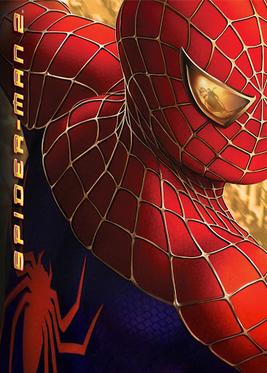
Spider-Man 2 is a 2004 action-adventure game based on the 2004 film of the same name. The game is the sequel to 2002's Spider-Man, itself based on the 2002 film of the same name. It was released on June 29, 2004, for the PlayStation 2, GameCube, Xbox, Microsoft Windows, and Game Boy Advance, followed by N-Gage and Nintendo DS versions later the same year. A PlayStation Portable version was released almost one year later, on March 23, 2005. The Game Boy Advance version, developed by Digital Eclipse, was re-released on a twin pack cartridge and bundled with that system's version of the 2002 Spider-Man game in 2005. A tie-in game, titled Spider-Man 2: Activity Center, was also released in June 2004. Published by Activision, the console versions were developed by Treyarch, while the others had different developers and are drastically different as a result. The Treyarch-developed versions are considered a landmark title in the industry for being the first superhero video game to incorporate a full open world design.
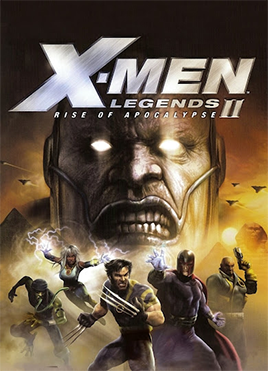
X-Men Legends II: Rise of Apocalypse is an action role-playing game developed primarily by Raven Software and published by Activision. It is the follow-up to 2004's X-Men Legends. It was released in September 2005 for the GameCube, Microsoft Windows, N-Gage, PlayStation 2, PlayStation Portable and Xbox. It is set after the events of X-Men Legends and features the mutant supervillain Apocalypse as the primary antagonist.

Mega Man Powered Up is a side-scrolling platform video game developed and published by Capcom. It was released for the PlayStation Portable (PSP) handheld game console in March 2006. It is a remake of the original Mega Man game released in 1987 for the Nintendo Entertainment System (NES). Players control the eponymous star Mega Man who must stop Dr. Wily from conquering the world using eight robots called Robot Masters. Unlike the original game, players can control these eight Robot Masters under the right circumstances. Other new features include a level creator mode and a challenge mode.

Pac-Man Championship Edition is a 2007 maze video game developed and published by Namco Bandai Games for the Xbox 360. It has since appeared on several other platforms, including iOS, Android, and the PlayStation 3 and PlayStation Portable as a PSP mini title available on the PlayStation Store. It is an HD reimagining of the original Pac-Man arcade game; players navigate Pac-Man through an enclosed maze, eating pellets and avoiding four ghosts that pursue him. Clearing an entire side of the maze of dots will cause a fruit item to appear, and eating it will cause a new maze to appear on the opposite side.
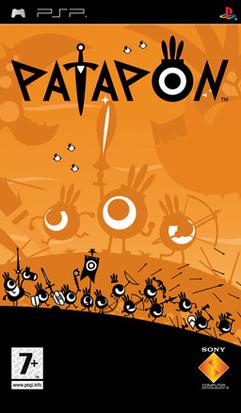
Patapon is a 2007 video game developed by Pyramid and Japan Studio and published by Sony Computer Entertainment for the PlayStation Portable (PSP). The game's unique genre was described to be a combination of rhythm and strategy. The game's concept and design were conceived when game designer Hiroyuki Kotani discovered the Patapon designs from French artist Rolito's personal website. The name Patapon was created by Rolito and was inspired by an old French word for "children". Kotani chose the name because it sounded similar to marching and drumming. It was released in Japan in December 2007 and in February 2008 for North America and Europe.

My French Coach and My Spanish Coach are educational games developed by Sensory Sweep Studios and published by Ubisoft for the Nintendo DS, iOS, PlayStation Portable, and Wii. They are part of Ubisoft's My Coach series, and were released for the Nintendo DS on November 6, 2007 in North America, for the Wii on November 23, 2007 in Europe, and My Spanish Coach was released for the PlayStation Portable on October 7, 2008, and iOS on June 6, 2009. For their releases in Europe and Australia, the games were renamed My French Coach Level 1: Beginners and My Spanish Coach Level 1: Beginners.

F1 2009 is a video game based on the 2009 season of the Formula One motor racing series. It was released on the Wii and PlayStation Portable in 2009 on 16 November in North America, 19 November in the PAL region and 20 November in the United Kingdom. The game was also released on iOS on 14 December for £6.99. The PlayStation Portable version was also available as a download from the PlayStation Store from 16 November.

Grand Theft Auto: Chinatown Wars is a 2009 action-adventure game developed by Rockstar Leeds in conjunction with Rockstar North and published by Rockstar Games. The game was released for the Nintendo DS in March 2009, PlayStation Portable in October 2009, iOS in January 2010, and Android and Fire OS devices in December 2014. It is the thirteenth game in the Grand Theft Auto series and a follow-up to Grand Theft Auto IV, and is the first entry to be released for handheld consoles since 2006's Vice City Stories. Set within modern-day Liberty City, the single-player story follows young Triad member Huang Lee and his efforts to recover a sword gifted by his late father after it is stolen from him, while inadvertently becoming caught in a power struggle amongst Liberty City's Triads.

Lego Harry Potter: Years 1–4 is a Lego-themed action-adventure video game developed by Traveller's Tales and published by Warner Bros. The game is based on the Lego Harry Potter toy line, and its storyline covers the first four books by J.K. Rowling and its film adaptations in the Harry Potter film series: Harry Potter and the Philosopher's Stone (2001), Harry Potter and the Chamber of Secrets (2002), Harry Potter and the Prisoner of Azkaban (2004), and Harry Potter and the Goblet of Fire (2005).

The Adventures of Tintin: The Secret of the Unicorn is an action-adventure, platforming video game based on the film The Adventures of Tintin: The Secret of the Unicorn, which is based on the series The Adventures of Tintin, the comics series by Belgian cartoonist Hergé. The game was released for Microsoft Windows, Nintendo 3DS, PlayStation 3, Wii and Xbox 360 on 21 October 2011 in Europe, on 1 December in Australia and on 6 December in North America. The game was developed by Ubisoft Montpellier, working in collaboration with the producers of the film, and published by Ubisoft. The iOS, Android and Symbian^3 versions were published by Gameloft and released on the App Store and Android Market on 31 October 2011, and on the Ovi Store on 11 January 2012. The online services for the game were shut down on 6 October 2015.

Real Racing is a 2009 racing game developed and published by Firemint for iOS. It was released on June 8, 2009 for iPhone and iPod Touch, and later a HD version was released for the iPad, which featured improved graphics to take full advantage of the iPad's capabilities. The game was a critical and commercial success, and has led to two sequels; Real Racing 2 in 2010 and Real Racing 3 in 2013.
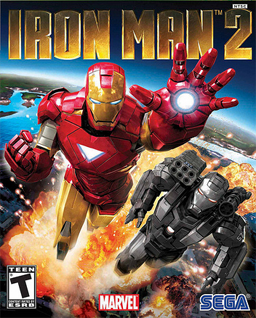
Iron Man 2 is an action-adventure video game loosely based on the 2010 movie of the same name. It was released in Europe on April 30, 2010, and in North America on May 4 for Xbox 360, Nintendo DS, Wii, PlayStation 3, and PlayStation Portable. Published by Sega, the game was developed by Sega Studios San Francisco for PlayStation 3 and Xbox 360, Griptonite Games for Nintendo DS, High Voltage Software for Wii and PlayStation Portable, and by Gameloft for iOS and BlackBerry PlayBook. A Microsoft Windows version was planned, but it was cancelled.

Minigore is a 2009 survival horror action shooter game for iOS, developed by Mountain Sheep and published by Chillingo. On December 6, 2012, a sequel, Minigore 2, was released on multiple platforms. Minigore was not updated for iOS 11 and was removed from the App Store until returning in 2019 under publisher GameClub.

Real Racing 2 and 2 HD for the iPad release, is a 2010 racing game, developed and published by Firemint for iOS, Android, OS X Lion and Windows Phone 8. It was released on December 16, 2010 for iPhone and iPod Touch, powered by Firemint's own Mint3D engine. A separate iPad version was released on March 11, 2011. On January 11, 2012 Real Racing 2 was confirmed as one of twenty-seven titles to be released on Windows Phone as part of a partnership between Electronic Arts and Nokia. The game is the sequel to 2009's Real Racing, and the download requires a one-time payment. It was a critical and commercial success, and a further freemium sequel, Real Racing 3, was released in 2013.

Asphalt 6: Adrenaline is a racing video game developed and published by Gameloft and is the sixth major game of Asphalt series. It was released for iOS on December 21, 2010, for Mac OS X on February 17, 2011, for Android on June 15, for Symbian^3 on July 20, for Mobile phones on August 31, for webOS on September 3, for BlackBerry PlayBook on October 12, and for Bada 2.0 on January 10, 2012.

Jetpack Joyride is a 2011 side-scrolling endless runner action video game created by Halfbrick Studios. It was released for iOS devices on the App Store on September 1, 2011 and has been ported to other systems. It was released online as a Flash version on May 11, 2012; on Android on September 28; on PlayStation Portable on November 20 in North America and November 21 in Europe; on BlackBerry PlayBook on December 13, 2012; on PlayStation 3 and PlayStation Vita on December 21 in Europe and December 31 in North America; on BlackBerry 10 on March 6, 2013; and on Windows Phone 8 and Windows 8 on June 5. It was also released on PlayStation 4 on April 26, 2016. A mobile version using the keypad was released in 2021 for KaiOS devices.
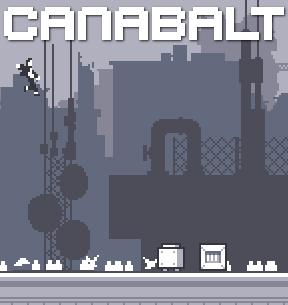
Canabalt is a one-button endless runner designed by Adam Saltsman for the Experimental Gameplay Project in 2009. The 2D side-scrolling video game was originally written as a Flash game, then ported to iOS, Android, PlayStation Portable, Ouya, and HTML5. An authorized version for the Commodore 64 was released on cartridge. Canabalt has been credited with popularizing the endless runner subgenre.

Shadowgun is a 2011 third-person shooter video game developed and published by Madfinger Games for iOS, BlackBerry PlayBook and Android. The game was followed by successful sequels Shadowgun: DeadZone (2012) and Shadowgun Legends (2018). The company is also preparing Shadowgun War Games focused on team based PvP gameplay and esports. In 2013, the game was ported to Ouya and BlackBerry 10, and was also released as a pre-installed app on PlayJam's GameStick for anyone who supported the GameStick Kickstarter campaign.

Hysteria Project 2 is a 2011 FMV survival horror adventure game developed and published by French studio BulkyPix for iOS and first released on the App Store on January 27, 2011. It was released as a PlayStation mini available for play on the PlayStation 3 and PlayStation Portable on August 10, 2011, in Europe and August 23, 2011, in North America. The port was published by Sanuk Games. The game is a sequel to the 2009 game Hysteria Project.

Pix'n Love Rush is a platform game released for iOS, PlayStation Portable, and Ouya in 2010-2013. An updated version called Pix'n Love Rush DX was released only for iOS on December 16, 2010.




















